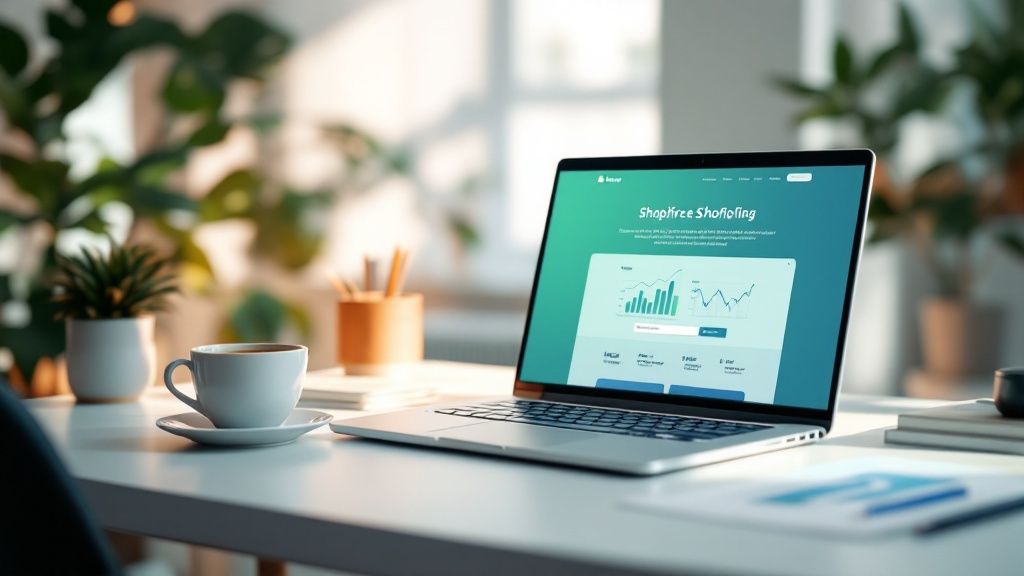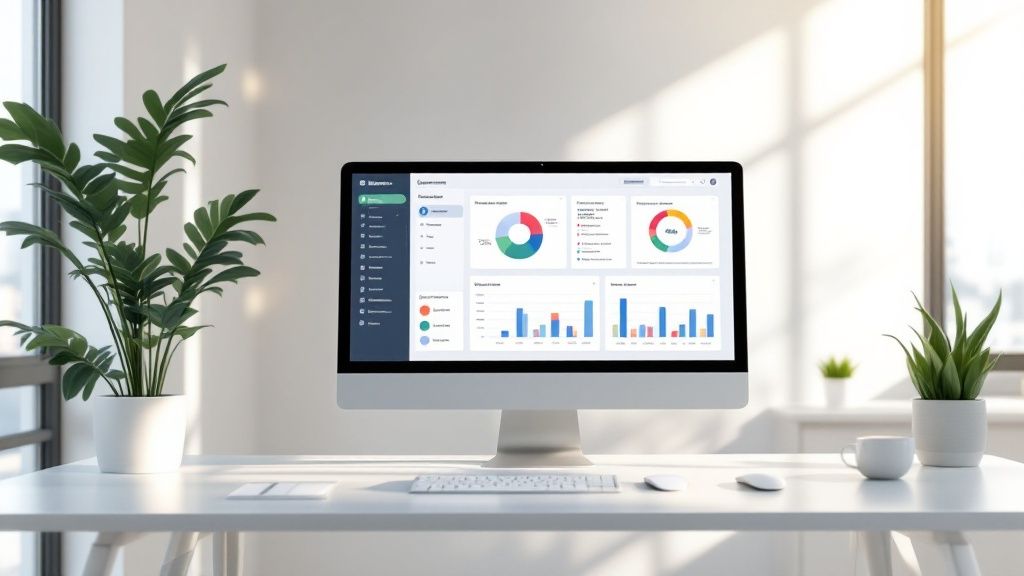What Are Good Conversion Rates? Proven Benchmarks and Optimization Strategies
January 30, 2025

Understanding the True Impact of Conversion Rates
Good conversion rates are essential for business success online. But what makes a "good" conversion rate? The answer goes deeper than just tracking basic metrics – it requires understanding how successful companies measure and analyze their conversion data to drive real business growth.
Beyond the Numbers: A Holistic View of Conversion Rates
While many businesses focus solely on final purchase conversions, this narrow view misses the bigger picture. Successful conversion tracking looks at the complete customer journey. A typical path might start with reading a blog post, move to downloading a resource, and end with a purchase weeks later. Each interaction plays a role in the final conversion.
This means paying attention to engagement at every funnel stage. Key metrics like time on page and pages per session show how visitors interact with your content. Customer feedback surveys provide direct insights into the user experience, helping identify and fix problems that could be hurting conversions.
The Psychology of Conversion: Understanding User Behavior
Getting someone to click "Buy Now" involves more than just an eye-catching button. It requires understanding what motivates your visitors and addressing their concerns. Take someone with a leaky faucet – they know it needs fixing but might hesitate due to cost or effort. A website that clearly presents an affordable solution backed by positive reviews can overcome those objections and drive action.
Success comes from really knowing your target audience. What problems do they need to solve? What makes them hesitate to buy? Building trust through social proof and addressing common concerns directly in your content and design can significantly boost conversion rates.
Different Conversions, Different Impacts
Each type of conversion serves a different purpose. A newsletter signup has different business value than a product purchase. Understanding the value of each conversion type helps focus optimization efforts effectively. For example, high email signup rates mean little if those subscribers rarely become customers – suggesting you need to improve lead quality rather than just quantity.
Here's how different conversions typically impact the business:
| Conversion Type | Potential Impact |
|---|---|
| Product Purchase | Direct revenue generation |
| Newsletter Signup | Lead generation for future nurturing |
| Content Download | Lead qualification and data collection |
| Free Trial Start | Opportunity to showcase product value |
By measuring the actual impact of each conversion type, you can make smarter decisions about where to focus your optimization efforts and resources. This strategic approach leads to better results that directly support business growth. Setting realistic goals starts with understanding what conversion rates you should expect for each type of action.
Breaking Down Industry Benchmarks That Matter
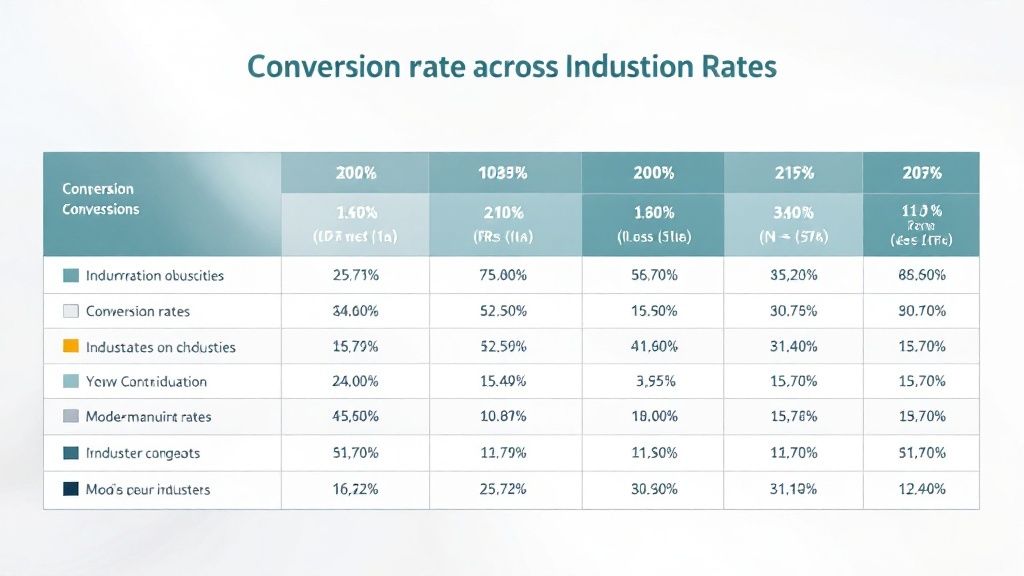
Looking at industry standards is essential for understanding conversion rates, but simple comparisons to broad averages don't tell the whole story. Good conversion rates depend heavily on your specific context – they can vary dramatically between industries, business types, and individual marketing campaigns. Let's explore how to properly evaluate conversion benchmarks for your business.
Decoding Industry Averages
While industry averages provide a starting reference point, the numbers vary significantly by sector. E-commerce sites typically see 2-3% conversion rates, with fashion retailers averaging around 2.7%. Meanwhile, B2B software companies often have lower rates since their sales process takes longer. This means success looks different depending on your business model – what's great for one company might be underwhelming for another.
The Impact of Market Position and Customer Journey
Your market position plays a big role in expected conversion rates. Well-known brands often convert better than newcomers because customers already trust them. The complexity of your sales process also matters – simple one-click purchases naturally convert higher than multi-step consultative sales. For global businesses, currency exchange rates affect purchasing decisions too. As of January 29, 2025, 1 USD equaled 0.961508 Euros, which impacts international sales. Learn more about exchange rates here.
Benchmarking Against Relevant Competitors
Rather than focusing on broad industry numbers, compare yourself to similar businesses. Look for competitors targeting the same audience, offering comparable products, and using similar marketing approaches. Study their website design, content quality, and calls-to-action to set meaningful benchmarks for your own performance.
Setting Realistic Targets and Driving Growth
Smart companies know that effective conversion optimization requires realistic goals based on their unique situation. Consider factors like seasonal trends, which marketing channels you use, and where customers are in your sales funnel. Conversion rates often spike during peak seasons or specific campaigns, so account for these natural fluctuations when measuring progress.
Actionable Strategies for Contextualizing Your Metrics
Track conversion rates by traffic source and page type instead of just looking at overall numbers. This reveals which channels and content perform best. For instance, social media might convert at 17.2% while organic search sits at 3.1%. Campaign-specific landing pages often outperform general product pages too. By breaking down your metrics this way, you can focus improvements where they'll have the biggest impact.
Understanding these factors helps you move past generic benchmarks and focus on meaningful growth for your specific business goals.
Critical Elements Driving Conversion Success

Getting visitors to take action on your website involves both practical and psychological elements working together. When you understand what truly moves the needle on conversion rates, you can make meaningful improvements that get real results. Let's explore the key factors that separate average performance from exceptional success.
The Technical Foundations: First Impressions Matter
Website speed can make or break your conversion potential. Research shows that when page load time increases from 1 to 3 seconds, the bounce rate jumps by 32%. This highlights how critical fast loading is for keeping potential customers engaged. On top of that, having a mobile-friendly design is essential since more people now shop on their phones than ever before.
Optimizing User Journeys
Smart brands carefully map out how visitors move through their sites to remove any points of friction. This could mean streamlining checkout to fewer steps or ensuring landing pages match what people searched for. Tools like Checkout Links show how personalizing the shopping experience directly boosts conversion rates.
Emotional Resonance: Crafting Compelling Narratives
The psychological aspects of buying decisions carry just as much weight as technical factors. Building genuine connections with customers helps drive conversions. Much like currency rates fluctuate – take the USD to EUR rate averaging 0.91753 but reaching 0.9291 by June 30, 2024 learn more about exchange rates – understanding what motivates your audience can shift engagement patterns dramatically. When you address real pain points and emotions in your messaging, you build both trust and urgency.
Identifying and Eliminating Conversion Barriers
Top-performing businesses constantly look for obstacles that prevent conversions. They use tools like heat maps, A/B testing, and direct customer feedback to spot problems. Once identified, they fix these issues through focused changes to design, offers, or messaging.
For more detailed conversion optimization strategies, check out: How to Master Increasing Conversion Rates with Proven Strategies.
Getting better conversion rates requires both technical excellence and deep customer understanding. By focusing on both aspects, you can guide visitors more effectively through their buying journey.
Implementing High-Impact Optimization Strategies
Real results come from systematic, data-driven strategies. Optimizing conversions requires testing different elements and analyzing what actually moves the needle for your specific audience and goals.
Engaging A/B Testing Beyond Button Colors
While many know A/B testing for simple color changes, effective testing digs much deeper. Smart businesses test key elements like:
- Copy Variations: Different headlines, descriptions, and messaging to identify what truly resonates
- Layout Adjustments: Changing page structures and flows to better guide users toward conversions
- Personalized Content: Adapting messaging based on user segments and behaviors
Testing these core elements helps uncover what specifically drives your audience to take action. Each test provides insights you can apply across your optimization efforts.
Advanced Landing Page Optimization Techniques
Landing pages directly impact conversion success. Here's how to optimize them effectively:
- Clear Value Proposition: Make your core offering and benefits immediately obvious in the first few seconds
- Streamlined Forms: Remove unnecessary fields and friction points that could cause abandonment
- Responsive Design: Ensure pages work smoothly across all devices and screen sizes
Getting these fundamentals right makes landing pages much more effective at converting visitors into customers.
Crafting Resonant Calls-to-Action
Strong calls-to-action guide users toward conversion. The best CTAs are:
- Urgent: Use time-sensitive language that encourages quick action
- Clear: Tell users exactly what will happen when they click
- Visible: Make buttons stand out without appearing aggressive
Implementing Frameworks to Foster Success
A structured approach helps teams consistently improve results:
- Goal Setting: Define specific, measurable targets tied to business objectives
- Measurement Tools: Use analytics to track the impact of each optimization
- Iterative Testing: Continuously test and refine based on real user data
For more insights on improving ecommerce conversions, check out: Ecommerce Conversion Optimization Proven Strategies to Boost Sales.
Following these proven strategies provides a clear path to steadily increasing your conversion rates through continuous testing and optimization.
Mastering the Modern Optimization Tech Stack
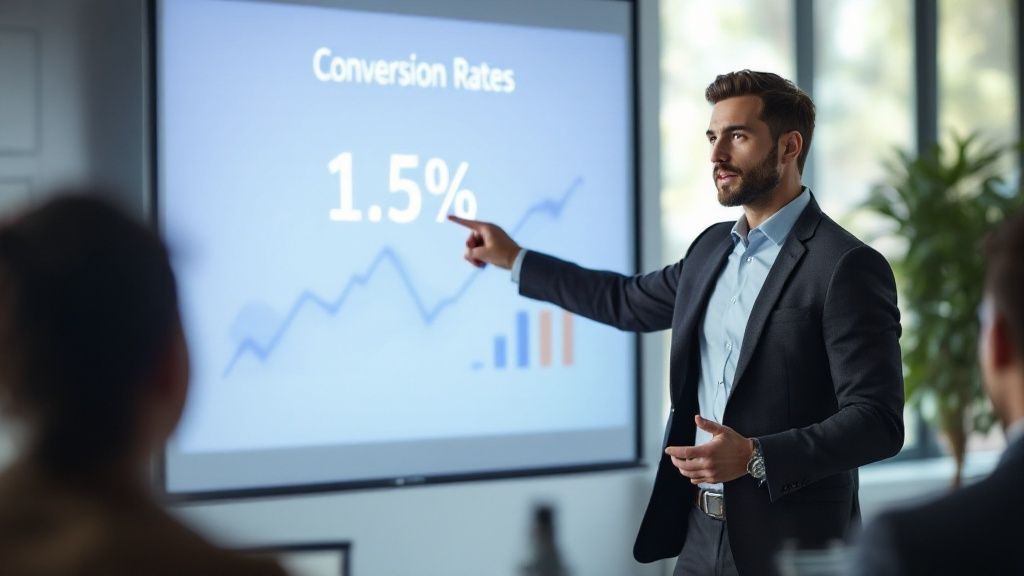
Finding the right conversion optimization tools can be challenging. Many companies today need a mix of analytics, testing, and AI tools to effectively improve their conversion rates. The key is identifying which tools will provide the best return on investment for your specific business needs.
Building an Effective Optimization Ecosystem
A solid modern tech stack needs three essential components:
- Analytics Platforms: Google Analytics and similar tools show you how users interact with your site in real-time. This data helps identify conversion bottlenecks and guides decisions.
- Testing Tools: Platforms like Optimizely let you run A/B tests to see which website changes lead to better results.
- AI Solutions: Smart algorithms analyze user patterns to provide personalized experiences. For example, product recommendations based on browsing history can boost sales significantly.
Selecting Tools with High ROI
Your choice of tools should align with your business model and target audience needs. Here are key factors to consider:
- Business Type: E-commerce sites need specialized checkout optimization – for instance, Checkout Links helps reduce cart abandonment through a smoother payment process.
- Integration: Make sure tools work together smoothly to give you complete data insights.
- Cost vs Value: Look for tools that grow with your business and offer good value, like flat-rate pricing models.
Implementation Strategies and Avoiding Common Pitfalls
For successful tool integration, follow these guidelines:
- Define Clear Objectives: Know exactly which metrics you want to improve with each tool.
- Staff Training: Make sure your team knows how to use the tools effectively.
- Regular Assessment: Check tool performance and impact often to spot improvement areas.
Watch out for common mistakes like adding too many tools at once or not setting clear success metrics. The right tools, chosen carefully and implemented properly, will help boost your conversion rates over time.
Remember – building an effective tech stack takes patience. Focus on picking tools that truly serve your business needs rather than chasing the latest trends. This practical approach leads to lasting improvements in both conversions and growth.
Preparing for the Future of Conversion Optimization
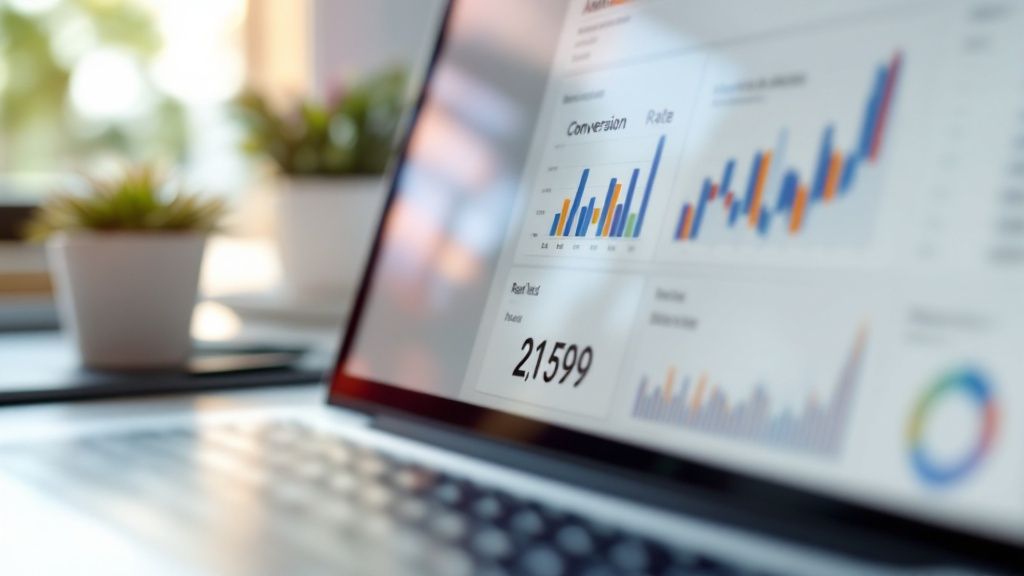
The world of conversion optimization is undergoing major changes as new technologies reshape how businesses interact with customers online. Artificial intelligence (AI) and machine learning (ML) are at the forefront of this shift, giving companies powerful new ways to create personalized experiences that drive results. Understanding and adopting these tools has become essential for businesses aiming to stay competitive.
Artificial Intelligence: The New Frontier in Optimization
AI is fundamentally changing how we approach conversion optimization. These systems can analyze massive datasets to understand and adapt to individual visitor behaviors in real-time. Think of AI as a highly intelligent assistant that learns each customer's unique preferences and shapes their experience accordingly.
Key capabilities include:
- Predictive Analytics: Using past customer data to anticipate future actions and personalize marketing
- Dynamic Content: Automatically adjusting website content based on visitor preferences and behavior
Machine Learning: Enhancing Conversion Strategies
ML systems bring automation and precision to conversion optimization efforts. They can handle complex testing and analysis tasks that would be impractical to do manually. For example, ML-powered A/B testing can continuously analyze user interactions and optimize pages without constant oversight.
Common applications include:
- Automated Testing: Quick identification of the best-performing page variations through rapid analysis of user responses
- Behavior Analysis: Deep insights into how users interact with your site, enabling precise targeting
Evolving Consumer Behaviors: Adapting to Change
Modern consumers have high expectations for their online experiences. They want seamless interactions across all devices and convenient ways to engage with businesses. Meeting these expectations requires optimizing for new behaviors and technologies.
Key areas of focus:
- Mobile-First Design: With most web traffic now coming from smartphones, mobile optimization is essential
- Voice Search: As voice assistants grow in popularity, optimizing for voice queries helps capture this traffic
Looking Ahead: Success in conversion optimization increasingly depends on embracing new technologies while staying focused on user needs. The businesses that thrive will be those that thoughtfully implement AI and ML capabilities while maintaining a deep understanding of their customers.
For Shopify merchants working to improve their conversion rates, tools like Checkout Links provide practical solutions that align with these modern optimization approaches.
 Checkout Links
Checkout Links


